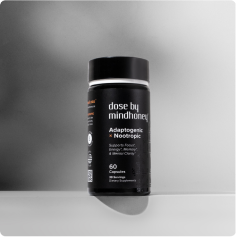Binaural Beats: Main Benefits for Enhancing Daily Focus

Binaural Beats: Main Benefits for Enhancing Daily Focus
What are Binaural Beats?
Binaural beats are auditory illusions that are created when two different frequencies of sound are played through headphones, with one frequency played in one ear and the other frequency played in the other ear.
The brain then perceives a third "phantom" frequency, which is the difference between the two frequencies.
For example, if a frequency of 100 Hz is played in one ear and a frequency of 105 Hz is played in the other ear, the brain will perceive a "phantom" frequency of 5 Hz.
This 5 Hz frequency is called the "binaural beat," and it is believed to have various effects on brain function and consciousness.
Binaural Beats are often used for relaxation and meditation, and some people claim that they can help improve sleep, reduce stress and anxiety, and enhance cognitive function.
It's important to note that binaural beats are not a substitute for medical treatment, and they should not be used as a replacement for proven therapies for any health condition.
What are Brain Waves & the different types?
Brain waves are patterns of electrical activity that occur in the brain. They are classified according to their frequency, which is measured in cycles per second (Hz). Different brain waves are associated with different states of consciousness and brain function.
There are five main types of brain waves:
1. Gamma waves (30-100 Hz)
Gamma waves are associated with high levels of consciousness and alertness, and are thought to be involved in higher mental processes such as problem-solving and learning.
2. Beta waves (12-30 Hz)
Beta waves are associated with normal waking consciousness and are associated with mental activity, such as problem-solving and decision-making.
3. Alpha waves (8-12 Hz)
Alpha waves are associated with relaxation and a state of calm, and are often present when we are in a state of meditation or deep relaxation.
4. Theta waves (4-8 Hz)
Theta waves are associated with a state of deep relaxation and are often present during sleep or when we are in a state of meditation. They are also thought to be involved in memory and learning.
5. Delta waves (0.5-4 Hz)
Delta waves are associated with deep sleep and are the slowest brain waves.
It's important to note that brain waves are not static and can change depending on a person's state of consciousness and mental activity.
For example, alpha waves may be present during relaxation, but beta waves may be present during periods of mental activity or stress.
Brain Waves can be measured using an electroencephalogram (EEG), which is a non-invasive test that records the brain's electrical activity through electrodes placed on the scalp.
Which brain wave is most-commonly used for daily cognitive function?
Beta waves (12-30 Hz) are typically associated with normal waking consciousness and are thought to be involved in mental activity, such as problem-solving and decision-making.
These waves are often present during periods of concentration and focus, and are considered the most "active" brain waves.
Some studies suggest that increasing beta wave activity may be beneficial for improving concentration and focus.
For example, a study found that listening to music with a fast tempo and high beta wave frequency improved focus and task performance in a group of college students.
Different brain waves may be beneficial for different tasks or activities, and what works for one person may not work for another.



